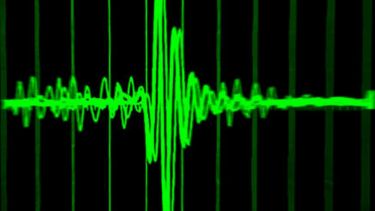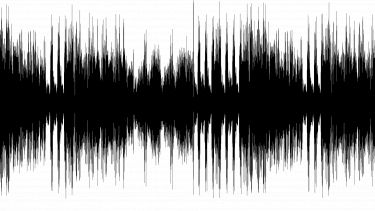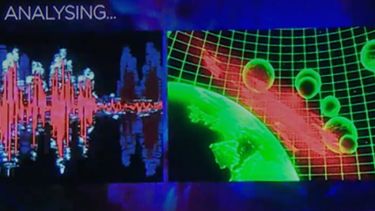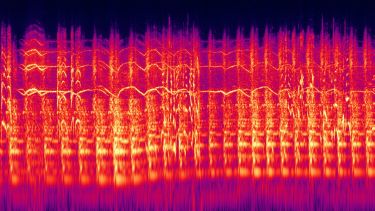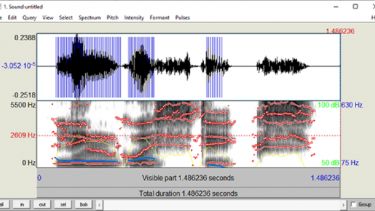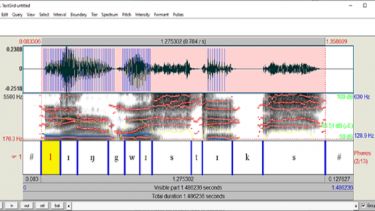Random Linguistics Musings #1 - They've Been Lying to Us!
Have you ever seen those wonderfully liny wavy thingamabobs in films? You know, when people are analysing sound files of alien voices? No clue what I’m on about? Well, these things…
So, I have been at university for nearly three, four, five years now – so long enough, but also long enough on a linguistics degree to have encountered a fair deal of science pertaining to that of the sounds of speech. We study how they’re stored and how they interact dialectally with one another – if you read this aloud, it may sound different to you than simply reading in your head. It probably will. And different people will read in different ways. These speech sounds are what underpin parts of linguistics such as phonetics, phonology, sociolinguistics, and also acoustics in advanced phonetics. It is the acoustics in phonetics that I really wanna talk about…
So, you know how in films they like to give us things that represent sound, like this…
Or even this…
And sometimes this…
(the first two are waveforms, the next is a Doctor Who-y waveform, and the last is a spectrogram)
They pretend that people can read off of these like it’s some other facet of language, and whilst it is, it takes a great deal of effort to actually understand what someone is saying without the audio, and also a lot of experience – some of which I am happy to say I am beginning to get. Well, in films and movies there is a lot of technobabble, isn’t there? And the ability for scientists to just read static and sometimes even fluid waveforms is just amazing and seems impossible.
That’s because it is not only impossible, but it is amazingly so. They’ve been lying to us!
So, here would be the steps for actually managing to read what someone may be saying rather than just making it nice and easy for the plot to progress. I’m going to introduce you briefly to some software called Praat and show you the breakdown of the word ‘linguistics’ using waveforms and spectrograms.
Firstly, you have to familiarise yourself with the types of sounds that there are, the families of sounds if you will. There are quite a few of these little classes, such as voiced and voiceless, aspirate or plosive, resonant and consonant, continuant, or obstruent, and so on. These all have voicing qualities such as breathiness, creaking, voicing, or voicelessness. They have a place of articulation which is where the sound comes from in the vocal tract. Lastly, the holy phonetic trinity is completed by manner – the way in which the sounds happen which essentially means how the air escapes to make those sounds.
So, after becoming familiar with families of sounds themselves and the labels defining them in terms of all voicing, placement, and manner of articulation, we have to look at the shape of the wave created in the waveform, as well as the spectrogram. The spectrogram is basically another very detailed graph that shows the resonances (echoes within the vocal tract) of each sound, as well as the fundamental frequency (the vibration of the vocal folds). These appear as horizontal and vertical striations, respectively, across the graph. The shapes of these lines and both the noisiness or lack thereof can be a really good indicator of what sounds (phones) may be occurring, and whilst the manner and voicing of the families of sounds can easily be detected from using both the waveform and spectrogram in combination, it can still be very difficult to know the place of articulation. So, things like ‘bib’, ‘did’, and ‘gig’ look almost identical on the graphs, as do ‘stie’, ‘sky’, and ‘spy’ – though there are still ways of determining them.
Above is the program Praat and it is showing both of the graph types we use to identify and analyse speech sounds. These graphs are merely overlays of the sounds themselves and so we always have the soundtrack of the sounds when identifying them. Below is what they can look like when we add the relative speech sounds.
The beauty of this program is that it can allow the analysis of the frequency, time, pitch, resonances, pulses, and many other things of an audio file in a rigorous, and helpful way once you get used to the odd software. See again the letters from the IPA (the phonetic alphabet, which you can kind of think of as a mod-pack extension of the ‘normal’ English [Latin] alphabet). So just remember when they give all that pretence over knowing what someone is saying by purely looking at the wavy moving line thing, they just can’t – unless, perhaps, they have a doctorate in advanced phonetics from centuries in the future, that is! We’ve been had.
For any phoneticians out there, yes, I did use zero-crossings. Next time, I’ll semi-randomly muse about the different fields of linguistics…
Written by DP, Digital Student Ambassador, on 12 April 2022.
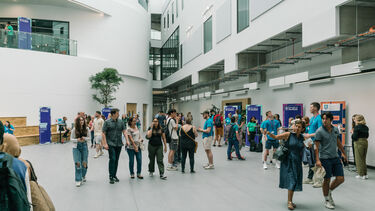
Experience Sheffield for yourself
The best way to find out what studying at Sheffield is like is to visit us. You'll get a feel for the atmosphere, the people, the campus and the city.

